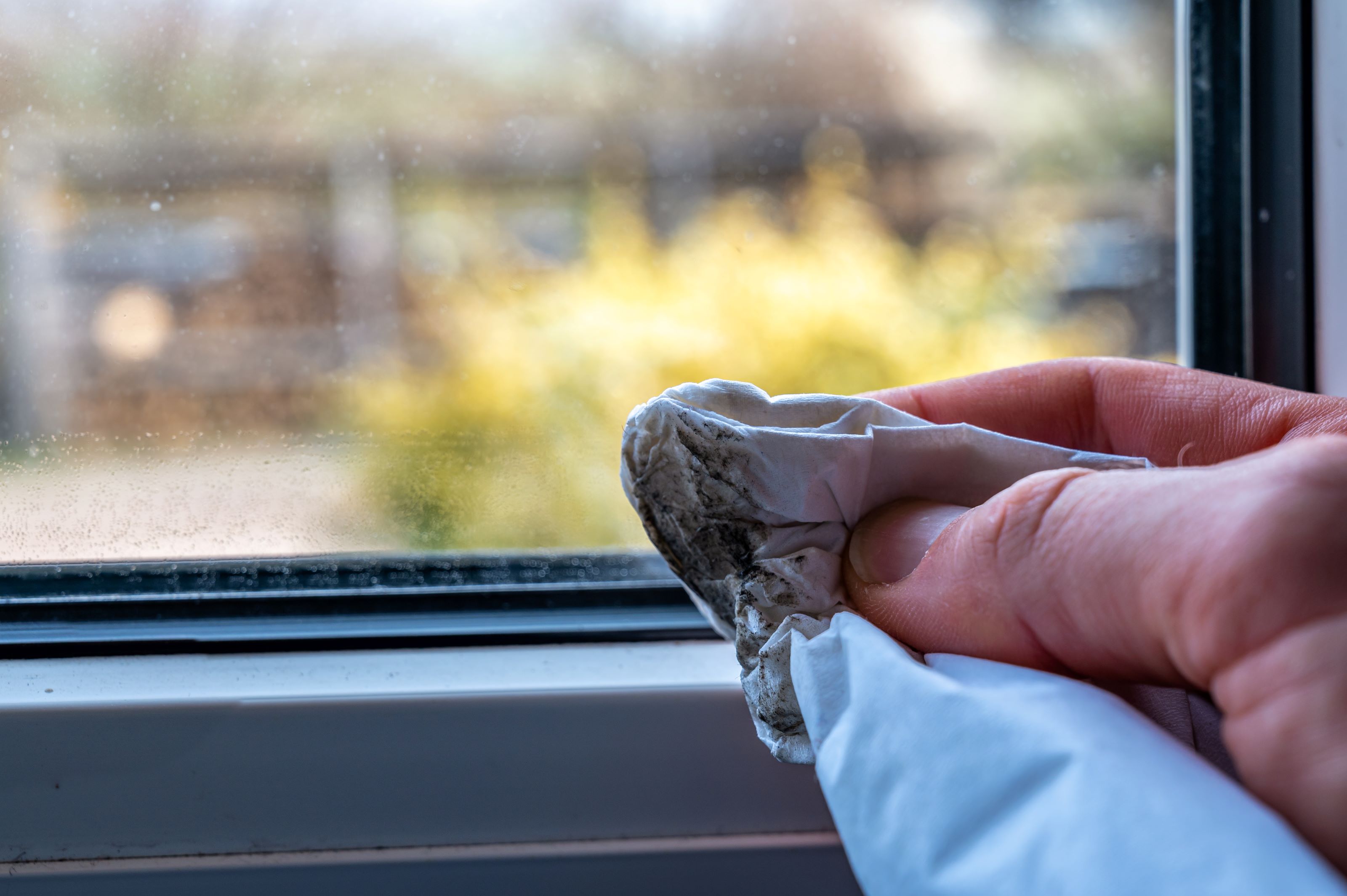How to remove black mould from silicone sealant
It's unsightly, smells bad, and can affect your health. So what's the best way to get rid of black mould on silicone sealant?

It can be hard to find out how to remove black mould from silicone sealant because of the sheer volume of information available online.
But Homebuilding and Renovating has put together a handy guide to dealing with unsightly mould in the bathroom, kitchen, and elsewhere, which is often caused by poor ventilation.
And remember, a few simple steps can keep mould growth to a minimum, which is especially important considering the health problems it can cause.
How to remove black mould from silicone sealant
Rub a paste comprised of one cup of white vinegar and two or three teaspoons of baking soda into the mouldy areas using a damp rag should do the trick. Alternatively, you can buy specialist cleaning products, like HG mould spray which you can buy easily from Amazon and says it is designed to treat mould on silicone. Just remember to follow the instructions carefully and pay attention to the safety advice.
If using the homemade vinegar and baking soda paste you should ensure there is a good, thick layer over the mould before leaving the paste to sit for five minutes, according to Cleanapedia. Then use a stiff-bristled brush like an old toothbrush to scrub the paste and black mould away from the sealant (but don't scrub too hard as silicone sealant is delicate) and use a clean, wet sponge to rinse the sealant clean. Make sure the water used to make the sponge wet is cold.
Kill any lingering mould spores with bleach and water – spray a solution of one part bleach to four parts water liberally over the sealant and leave to evaporate.
Rinse the area again with a sponge and cool water and then dry with a clean microfibre cloth or towel.
You can cause damage to the silicone sealant if you use the wrong products, such as a glass cleaners, methylated spirits, white spirits, ammonia-based cleaning agents, steel wool, or scouring pads.
How do you remove mould stains from silicone?
If stains remain after the above advice, you should scrub at heavy stains with a stiff-bristled brush or reapply the white vinegar and baking soda paste.
If the mould is particularly stubborn, you may have to try removing silicone and then reapply it– a job you can easily do yourself and, if unsure, you can read up on in our sealing a bath guide.
What causes black mould on silicone?
Black mould growth on silicone can be sparked by high levels of moisture, poor air circulation, organic waste materials on the sealant surface (such as soap, body gel, shampoo, or kitchen waste), and warm temperatures.
Black mould around windows looks awful, can be smelly, damage your fixtures, and potentially spread across walls, ceilings, and floors. It can also cause respiratory health problems, particularly among people with asthma and similar health problems.
How do I prevent black mould on silicone sealant coming back?

Need more advice or inspiration for your project? Get two free tickets to the Homebuilding & Renovating Show
Wash your bath towels, shower curtain, and bathroom furnishings regularly to avoid giving mould a place to grow – it loves damp conditions.
Use a dehumidifier, an extractor fan (you can check out our guide on best bathroom extractor fans), trickle vents over windows, or open a window or door to remove lingering moisture from the air after showering. Dry clothes outside or in a well-ventilated area instead of the room with the mould problem. You can also make sure if you ever reapply the silicone sealant that you are using a mould resistant one (check out our best bathroom sealant guide).
Ensure you keep on top of your bathroom and kitchen cleaning too. Wiping the silicone after, for example, a shower, deprives mould of the conditions it needs to thrive.
If the dampness comes from a structural issue, such as cracks in the wall, it will require work on the house to tackle the leak and then extensive damp-proofing work by a professional. This involves using chemical sprays to kill the mould and then the application of waterproofing agents.
If you have black mould in your bathroom in places that extend beyond silicone sealant, it is worth checking out our guide on how to get rid of it in other areas too.
Get the Homebuilding & Renovating Newsletter
Bring your dream home to life with expert advice, how to guides and design inspiration. Sign up for our newsletter and get two free tickets to a Homebuilding & Renovating Show near you.
Sam is based in Coventry and has been a news reporter for nearly 20 years. His work has featured in the Mirror, The Sun, MailOnline, the Independent, and news outlets throughout the world. As a copywriter, he has written for clients as diverse as Saint-Gobain, Michelin, Halfords Autocentre, Great British Heating, and Irwin Industrial Tools. During the pandemic, he converted a van into a mini-camper and is currently planning to convert his shed into an office and Star Wars shrine.

